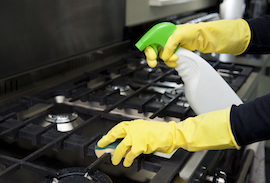Protect Yourself and Your Guests When Hosting a Holiday Party
Hosting a party this holiday season? Before stamping that last invitation, learn how you can protect yourself and your guests. The legal principles at work here are called premises and social host liability. Here are tips and suggestions for preventing injuries and protecting your interests before guests arrive:
Let’s Start with Alcohol
“Holiday cheer” is often synonymous with alcoholic beverages in many people’s minds. There is nothing wrong with that thinking, but homeowners should be aware that they may be held liable in some states if intoxicated guests leave the party and cause injury or property damage to others. So...
- Encourage guests to pick a designated driver.
- Stock plenty of non-alcoholic beverages and serve food.
- Don't pressure guests to drink too much and cut off anyone who has already had enough.
- Call a cab for intoxicated guests, give them a ride (if you are sober), or offer a place to sleep at your house.
- Never allow minors to drink.
- As the host, stay in control by not drinking too much yourself.
Now, Look Around Your House
As the property owner, you are responsible for protecting your guests from unsafe conditions on your property. So...
- Fix any tripping hazards like broken stairs or loose handrails, double-stick tape throw rugs and secure extension cords.
- Remove any dangerous items that might injure children like an old freezer, a broken swing or poison hazards.
- In colder climates, keep sidewalks and steps free of ice and snow.
- If you have a pool, keep gates locked or make sure kids are supervised by an adult if using the pool.
- Consider restraining pets as you may be liable if a guest is bitten or scratched.
Review Your Homeowner’s Insurance
The liability coverage in your homeowner’s insurance may be your final line of defense if someone is hurt during a party at your home. So...
- Make sure it is in force and that your policy limits are high enough to cover an injury. Standard minimums of $100,000 to $300,000 may not be enough to cover all the costs associated with a serious injury.
- If you have significant assets in addition to your home, consider an umbrella policy for added liability protection.
- Check for exclusions and contact your agent if you have any questions.
This article appeared in our November 2015 "You Should Know" e-newsletter.










